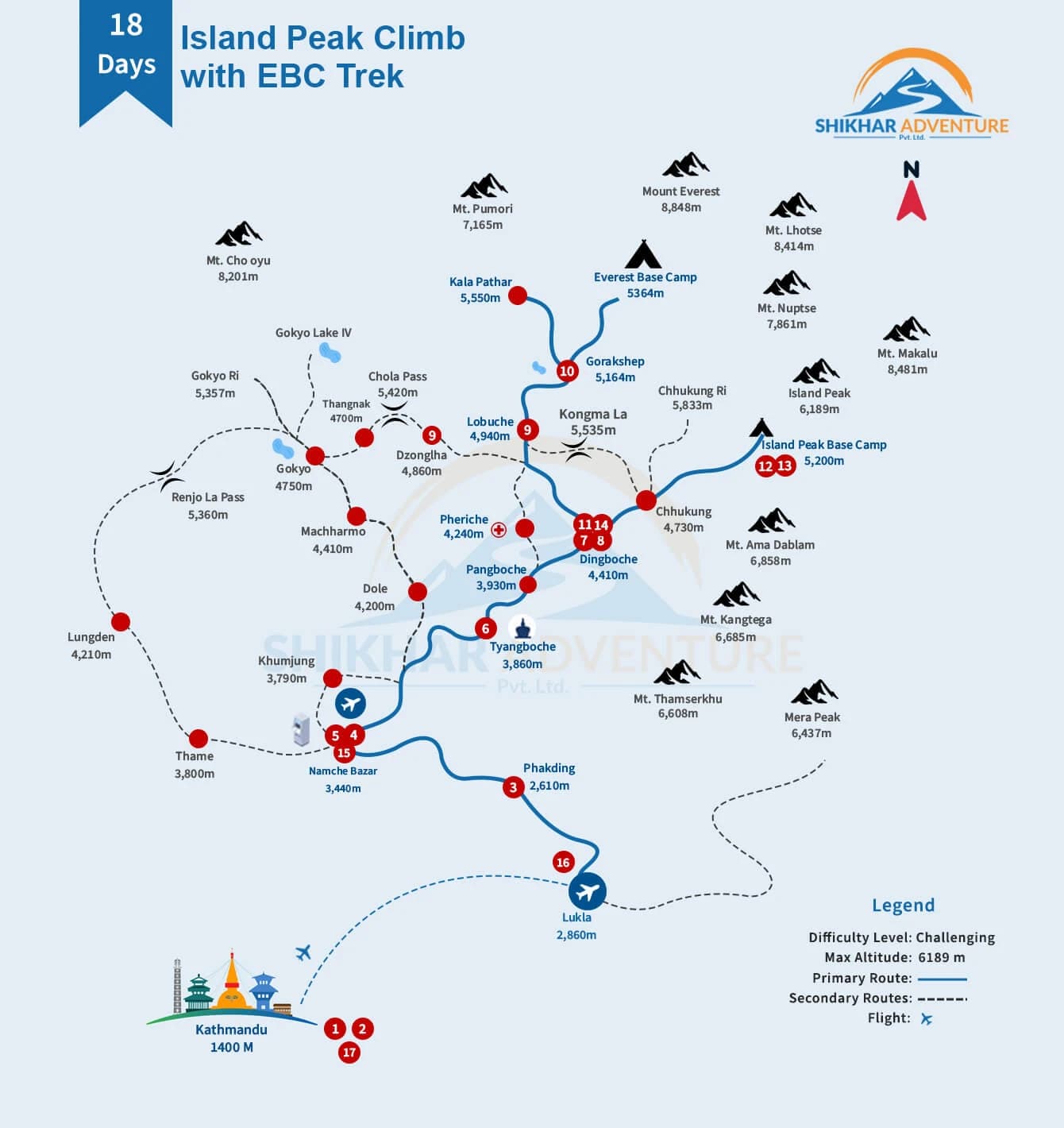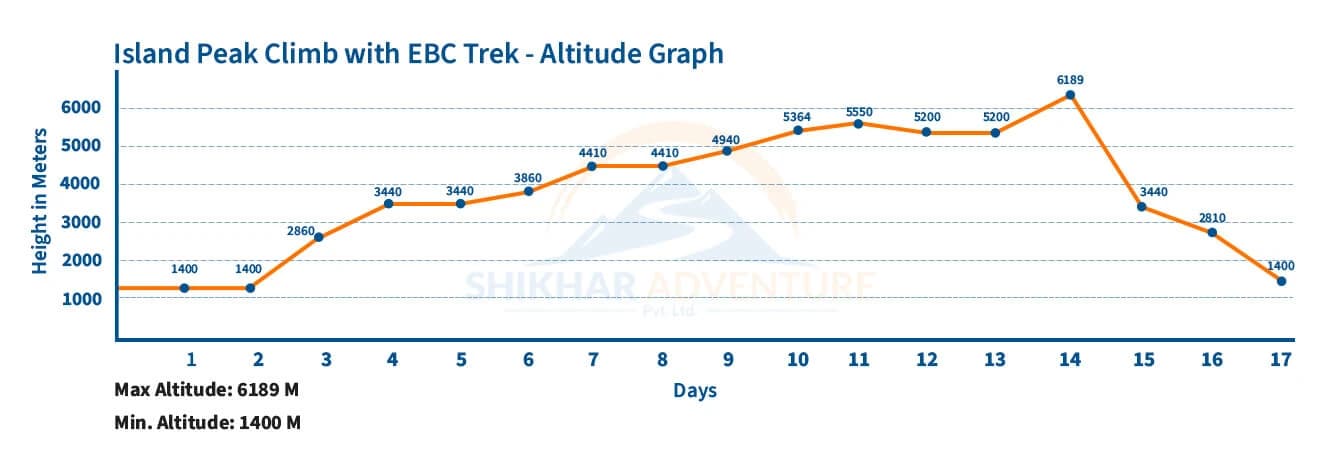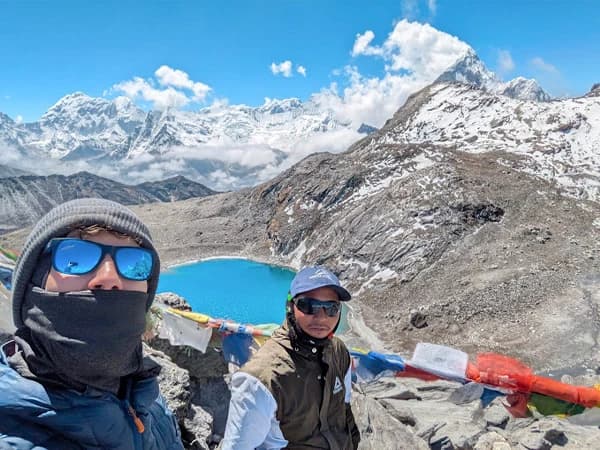About the trip
Rising in the 6198-meter Everest Region, Island Peak—also known as Imja Tse—calls to visitors with its beauty. Its accessibility and appropriate technical challenge appeal notably to climbers. Originally called by Eric Shipton's party in 1951 for its resemblance like an island in a frozen sea, it retains its well-known name even though it was formally renamed Imja Tse in 1983.
Mountaineering history has a particular place for this mountain as legends like Tenzing Norgay and Edmund Hillary brought it under control in 1953 in preparation for their Everest trip. Classed as a "trekking peak," Island Peak is still reachable even though it is well-known; little technical knowledge is needed.
Trekking the renowned Everest Base Camp, the road to Island Peak offers a mix of familiarity and excitement. Once at the Base Camp, a day of rest and acclimatization is absolutely essential to help body and mind be ready for the climb. Starting in the predawn hours, the ascent guarantees ideal circumstances for success.
Rising from Base Camp to High Camp offers considerable difficulty; a glacier crossing leads to a steep snow and ice slope from rocky steps. Climbers climb around 100 meters to reach the top ridge on guided fixed ropes. Though rigorous, the work is much rewarded.
One should treasure the feeling of standing on Island Peak and surrounded by the magnificent panorama of the Everest area. Climbers of all stripes are permanently changed by the sight of soaring mountains like Lhotse, which inspire success. Island Peak delivers an adventure full of excitement and breathtaking moments when you have fitness and will as your allies.
Trekkers to Everest Base Camp from Island Peak Climbing is a combination of natural beauty, cultural immersion, and the excitement of ascending one of the most famous mountains—not just any trip.












